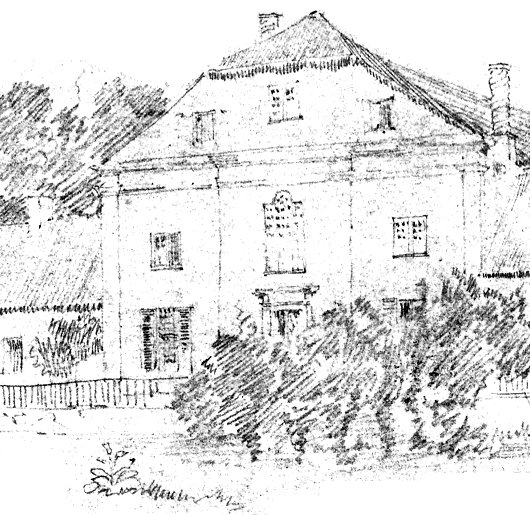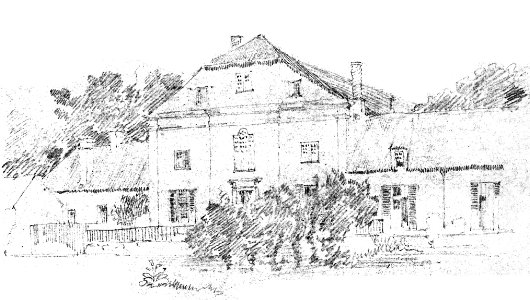
About Andrew Cusack
 Writer, web designer, etc.; born in New York; educated in Argentina, Scotland, and South Africa; now based in London.
Writer, web designer, etc.; born in New York; educated in Argentina, Scotland, and South Africa; now based in London. read more
News
Blogs
Reviews & Periodicals
Arts & Design
World
France
Mitteleuropa
Knickerbockers
Argentina
The Levant
Africa
Cape of Good Hope
Netherlands
Scandinavia
Québec
India
Muscovy
Germany
Academica
Rouwkoop: An Old Cape Hodgepodge

We can deduce a lot about a power by looking at the structures it erects. The return to neo-classicism under Stalin after the earlier Russian deconstructivist architecture of the 1920s is telling, as is the almost universal (and only seemingly contradictory) adoption of socialist Bauhaus architecture for the headquarters of New York corporations in the post-war period, or the turn to Brutalism by the governments of numerous Western liberal countries in the 1960s, 70s, and 80s. While the apartheid government adopted a guise of conservatism, its revolutionary re-ordering of South African society was so radical that, for example, the old Edwardian railway station in Cape Town was demolished and completely rebuilt in order to better accommodate the separation of the races.
When the Afrikaner Nationalist government was elected in 1948, it inherited one of the richest architectural traditions in the world. South African architecture, from the original Cape Dutch so praised by Ruskin, through the Cape Classical of the architect Thibault and the sculptor Anreith, and on to the attempt at a South African national style by Edwardian architects like Herbert Baker, the nation’s legacy of boukuns (building-art) is one of which any nation would be proud.
The Cape Dutch style has proved particularly versatile and easily reinterpreted in almost every age of South African history since Jan van Riebeeck planted the oranje-blanje-blou on these shores in 1652. Yet from 1948 until its final electoral demise in 1994 the National Party government erected almost no buildings in the “national style” of Cape Dutch or its aesthetic descendants. Instead, they built in the grim modernist style found everywhere else in the world, both in the liberal-capitalist West and the totalitarian-Marxist East. One need only consider the Nico Malan (now Artscape) in Cape Town, the Staatsteater in Pretoria, or the Theo van Wijk building at Unisa.

We should, however, not only judge a society by what it creates, but also by what it destroys. The Nationalist government’s architectural legacy of creation was undeniably abominable, but the government did not even manage to keep a decent score in preservation. I have already mentioned before the case of Saasveld, the old Cape Town home of Baron Willem Ferdinand van Reede van Oudtshoorn which, thankfully, was carefully dismantled instead of being simply demolished. While Saasveld was eventually reconstructed at the Huguenot Memorial in Franschhoek, too many fine examples of old Cape architecture met with ruin and destruction, either thanks to the lack of state-mandated preservation or as a result of demolition by the government itself. The old estate of Rouwkoop in Rondebosch is a perfect example (above, in a sketch by Sir Herbert Baker).
The estate was granted in the 1660s, making it one of the earliest, and the house was built in a typically simple classical style in 1701. The masters of Rouwkoop, however, swiftly abandoned their classical refinement in favour of a more rustic approach, building additions with thatched roofs, including a jerkinhead roof to crown off the mismash yet charming arrangement. Classicism in the Cape is almost never pretentious, but on the contrary rather admirably restrained (in fact, one almost wishes its occasional baroque flourishes were more frequent). Still, when one considers Rouwkoop one gets the impression of an urbanely thinking patriarch who is succeeded by offspring who have descended into a more comfortable rustication.
The idiosyncrasy of Rouwkoop should have marked it as especially worth of preservation. In the estate’s later years as a hotel, however, it was partially burnt. Instead of undergoing the devoted restoration it deserved as an important part of the architectural heritage of the country, Rouwkoop was levelled to the ground in the 1960s and a block of apartments built on the site. It is frustrating that in the list of the many old homesteads captured by the camera of Arthur Elliott in the early twentieth century, Rouwkoop is absent. Still, for this old Cape dame of a house — with one foot in the city and one in the country — being sketched by no less than Sir Herbert Baker seems an appropriate legacy.
Search
Instagram: @andcusack
Click here for my Instagram photos.Most Recent Posts
- Faithful Shepherd of the Falklands April 8, 2025
- Articles of Note: 8 April 2025 April 8, 2025
- Proportionality Destroys Representation April 8, 2025
- Sag Harbor Cinema March 26, 2025
- Teutonic Takeover March 10, 2025
Most Recent Comments
Book Wishlist
Monthly Archives
Categories



A most excellent observation.
Admittedly, I must say I that I think so greatly of this piece is beacause it was a strong attack on the whole philosophy of apartheid, something I had thought you might not be inclined to do, extrapolated from your opinions on Ian Smith and his regime in Rhodesia.
On another note, I think you ought to do a piece on the Voortrekker Monument, which is intresting in both its origins and its architecture.
A quick question, however. The old Edwardian railway station where? Cape Town, I presume?
Indeed in Cape Town. Being a Wes-Kaap-oriented person, I often forget that there are other cities in South Africa!
Ian Smith was a conservative determined to preserve something imperfect lest it be replaced with something abominable. Hence why he handed power over to a moderate Black government, which unfortunately the West still refused to recognise, thus leading to Mugabe’s rise to power.
The S.A. Nationalists, on the other hand, attempted to create a freakish, hyper-segregationist, race-based state. Unjust, unrealistic, unsustainable!
I hope you are doing well. I understand that this article was written eleven years ago but I hope that it is still of interest to you. It certainly is to me. Researching my ancestry and it’s offspring I became aware that Rouwkoop House once belonged to Sarah Hobart Bobbins nee Mills. Sarah was born at see on ship named the Hobart en route from the UK to either Saint Helena and then Cape Town but the family Mills disembarked at Saint Helena where She most likely grew up and later married Mr Bobbins. I somehow find the story interesting and hope to know more. I hope you can provide more information that I can research.
My connection to this story is that her brother George Mills married into the Afrikaans or German side and I’m descended on that line of the family. More intrigue that sparks my interest. I’m sure that George’s sister was somewhat part of the well to do Cape residents but George chose to trek with the Voortrekkers. Lots of interesting stories can be deduced from that set of circumstances.
Wishing you well and I hope you have more info. Feel free to email me if you do.
Thanks and regards.
Nick.